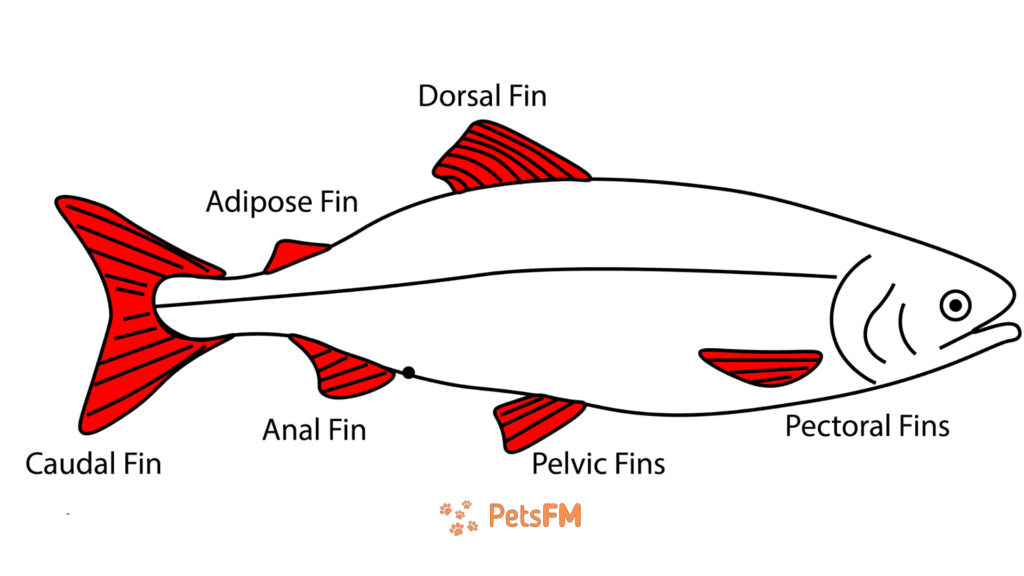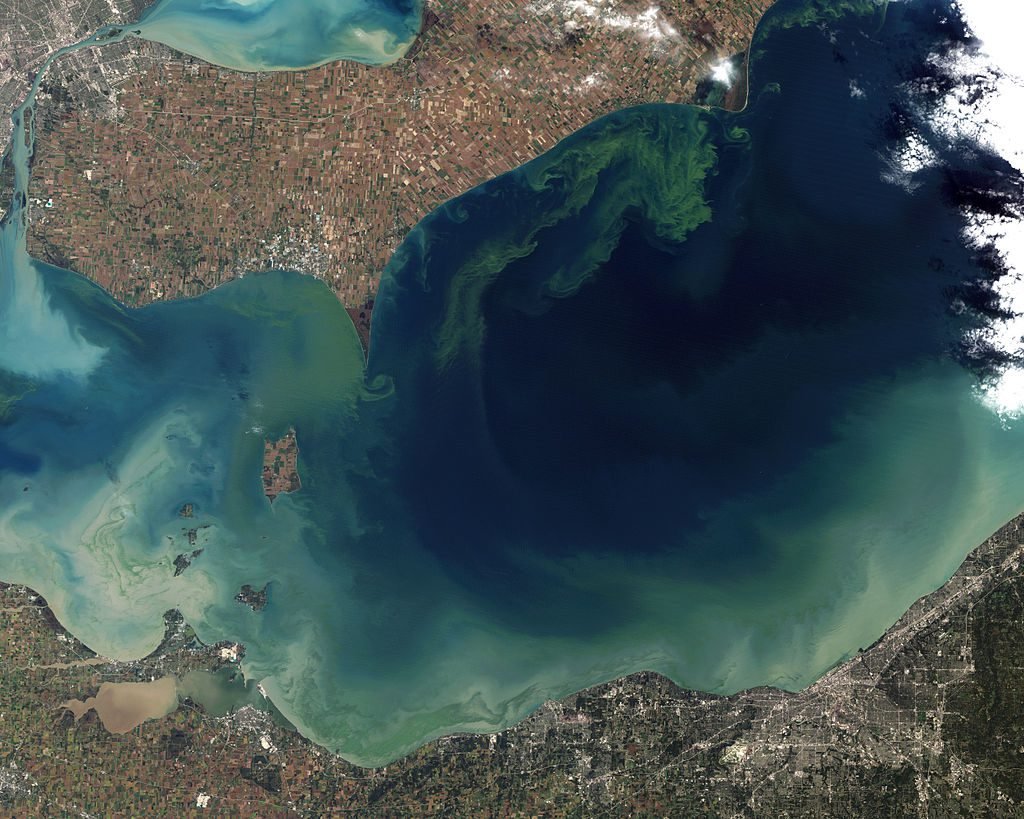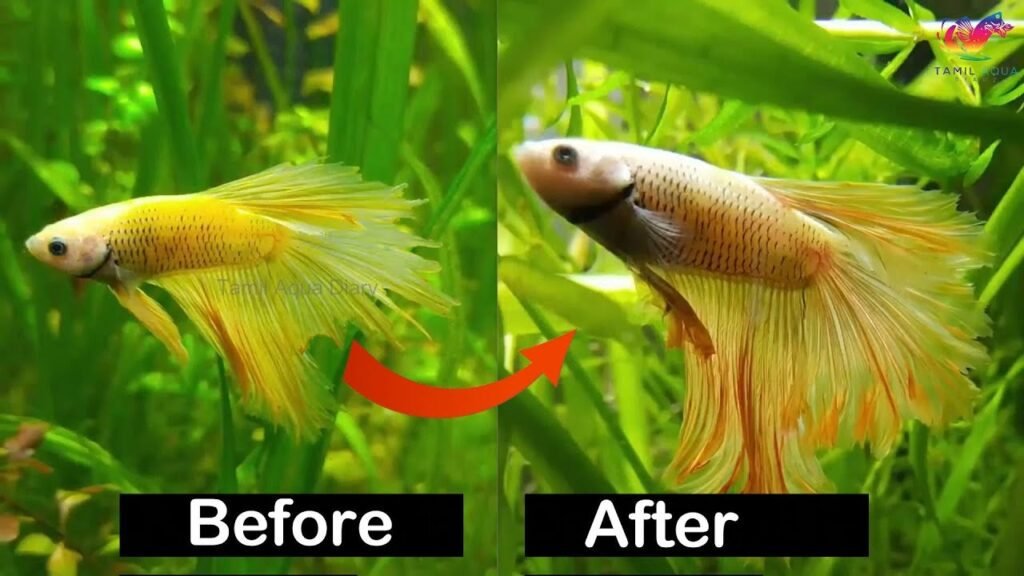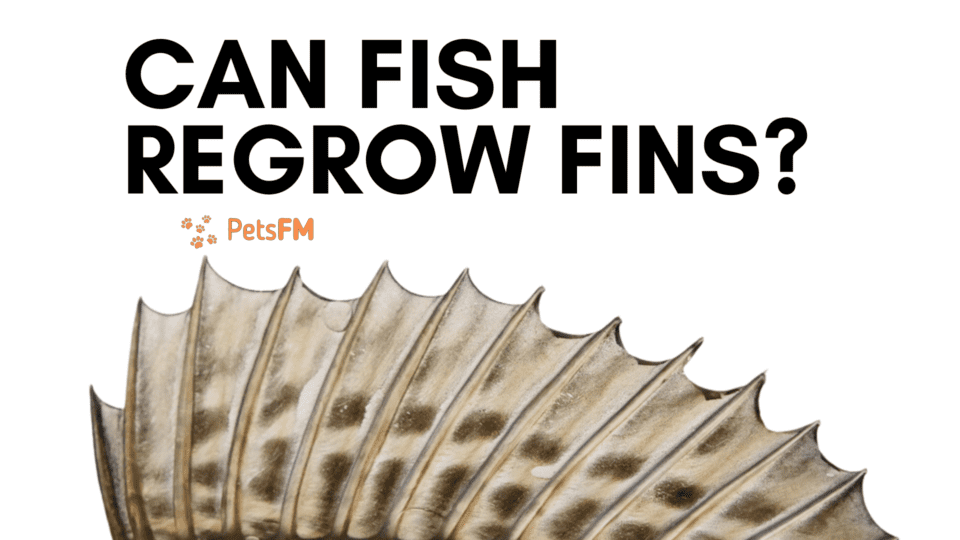


16 Fish Species That Eat Algae (+Facts to Know)
February 26, 2024![Can Snakes Taste Air? [Detailed Guide]](https://petsfm.com/wp-content/uploads/2024/02/Can-Snakes-Taste-Air-150x150.png)
![Can Snakes Taste Air? [Detailed Guide]](https://petsfm.com/wp-content/uploads/2024/02/Can-Snakes-Taste-Air-150x150.png)
![Can Snakes Taste Air? [Detailed Guide]](https://petsfm.com/wp-content/uploads/2024/02/Can-Snakes-Taste-Air-150x150.png)
Can Snakes Taste Air? [Detailed Guide]
February 26, 2024Imagine a world underwater, filled with fish of all kinds, swimming around with their colorful fins. Now, think about what happens when a fish’s fin gets cut. Does it grow back?
Luckily, fish have the remarkable ability to regenerate their fins, a crucial aspect of their health and agility in the water. This capability is essential for them to maintain optimal mobility and overall well-being.
So, let’s explore this incredible ability of fish without giving away how they do it just yet. We’re about to find out how these underwater friends keep swimming strong, no matter what comes their way.
Can fish regrow their fins and tails? How do they do that?
Yes, fish can regrow their fins and tail. This remarkable ability allows them to recover from injuries and live healthily in their aquatic environment. However, in most cases, the regrown fins or tails are not exactly similar to the original ones.
Fish possess an extraordinary regeneration capacity, enabling them to heal wounds and regrow entirely parts of their body, including fins and tails. This process begins with forming a particular tissue at the injury site, a blastema, a mass of cells capable of growth and differentiation into various cell types.
Over time, these cells multiply and develop into the structures needed to reconstruct the fin or tail, closely mirroring its original shape and function. This natural healing process is fascinating and critical for a fish’s survival, as it helps them evade predators, navigate their environment, and compete for resources more effectively.
The ability to regrow fins and tails showcases the incredible regenerative powers of fish, offering insights into potential applications in medicine and science, such as understanding how to improve wound healing and regeneration in humans.


Fish Fin Labeled
How do fish fins get damaged or torn?
Fish fins can get damaged or torn through various encounters in their underwater world. Fish fins are vulnerable to injury from skirmishes with other fish and brush against sharp objects to the stresses of living in an overcrowded or poorly maintained fish tank.
Predatory Attacks
Fish often suffer fin damage during encounters with predators. A close escape can result in nipped or torn fins as they flee from larger, more aggressive fish or other aquatic predators.
Environmental Hazards
Sharp rocks, coral, and even abrasive tank decorations can cause cuts and tears in the delicate fin tissue as fish navigate their surroundings.
Aggressive Tank Mates
In aquariums, aggressive behavior among tank mates can lead to fin nipping. Some fish species are known to chase and bite at the fins of others, causing significant damage.
Poor Water Conditions
Suboptimal water conditions, including high toxins, can weaken fish fins and make them more susceptible to tearing and infections.


Algae Bloom in Lake
Factors influencing fin regrowth in fishes
The regrowth process in fish fins is influenced by a complex interplay of genetic, environmental, and health factors, each playing a crucial role in the efficiency and success of regeneration.
Genetic Factors
Genetics plays a pivotal role in the regenerative capabilities of fish. Specific genes must be activated to initiate and regulate the process of fin regeneration, including those responsible for cell proliferation, migration, and differentiation.
Variations in these genes among different species and individuals can lead to differences in regenerative abilities, with some fish being able to regenerate their fins more wholly and quickly than others.
Environmental Factors
The environment in which a fish lives significantly impacts its ability to regenerate fins. Water quality, temperature, and the presence of pollutants can affect the speed and success of fin regrowth.
Clean, well-oxygenated water with optimal temperature conditions supports efficient regeneration, while polluted or suboptimal conditions can slow down the process and lead to incomplete or malformed regrowth.
Health Factors
The overall health of a fish also influences its regenerative capacities. Nutritional status, stress levels, and diseases or infections can impact regeneration. A well-nourished fish with a strong immune system is more likely to successfully regenerate fins than a malnourished, stressed, or battling illness.
Additionally, the age of the fish can affect regeneration, with younger fish generally having a more robust regenerative response compared to older individuals.
How long does it take for a fish to regrow its fin or tail?
The time it takes for a fish to regrow its fin or tail varies widely depending on the species, the extent of the injury, and environmental conditions. Fin regeneration can take a few weeks to several months on average.
Some fish can regrow their fins for minor injuries in as little as 2-3 weeks, while more significant damage may require several months for complete regeneration.
The process is also influenced by water quality, temperature, the fish’s overall health, and nutritional status. Optimal conditions can significantly speed up the regeneration process, whereas poor conditions can slow it down or lead to incomplete regeneration.
Regeneration in Other Aquatic Creatures
Regeneration is fascinating in many aquatic creatures, not just fish.
While fish are known for regrowing fins and tails, other aquatic organisms showcase even more remarkable regenerative abilities, from regrowing entire limbs to vital internal organs.
- Starfish (Sea Stars): Starfish are famous for their ability to regenerate lost arms. This ability isn’t just limited to limbs; they can also regrow parts of their central disk, making it possible for a new starfish to form from a single arm and a portion of the central body, given the right conditions.
- Salamanders: Among the most remarkable regenerators, salamanders, particularly axolotls, can regenerate not only their tails and limbs but also parts of their heart, eyes, spinal cord, and even portions of their brain, fully restoring function each time.
- Sea Cucumbers: These echinoderms can regenerate lost body parts and internal organs. When threatened, some species expel their internal organs to distract predators and later regenerate these parts.
- Hydra: A simple freshwater organism known for its regenerative capabilities, hydra can regenerate its entire body from just a tiny fragment. This ability is due to its stem cells, which can differentiate into any cell type.


Fin Regrowth in Fish
How can you encourage fin regrowth in your aquarium fish?
Facilitating fin regrowth in aquarium fish involves creating an optimal environment and providing proper care to ensure the best conditions for healing. Here are some key steps:
- Maintain Clean Water: Regularly change the water and monitor water quality to keep it clean and free from harmful chemicals. Good water quality prevents infections and ensures a healthy regrowth process.
- Optimize Water Conditions: Ensure the water temperature, pH, and hardness are within the ideal range for your specific fish species. Stable water conditions support faster and healthier fin regeneration.
- Provide a Balanced Diet: Offer a nutritious diet that meets all the dietary needs of your fish. High-quality food enriched with vitamins and minerals can boost the fish’s immune system and promote better regrowth.
- Minimize Stress: Reduce stressors in the aquarium, such as aggressive tank mates, overcrowding, or loud noises. Stress can weaken the fish’s immune system, hindering the regeneration process.
- Use Aquarium Salt (if appropriate): For certain species, adding a small amount of aquarium salt can help prevent infection and aid healing. However, this depends on the species, as some freshwater fish may not tolerate salt.
- Quarantine Injured Fish: If possible, move injured fish to a separate tank. This reduces the risk of further injury or aggression from other fish and allows for closer monitoring and care.
- Avoid Overmedication: Only use medications if there is a clear indication of infection and after researching the best treatment options. Unnecessary medication can harm beneficial bacteria and the fish’s natural healing process.
- Regular Monitoring: Keep a close eye on the injured fish to monitor healing progress and catch any signs of infection early. Early detection and treatment of complications can significantly improve the outcome.
FAQs – Can Fish Regrow Fins
Can all fish regenerate their fins?
Most fish can regenerate their fins to some extent, but the efficiency and speed of regeneration can vary widely among species.
How can I tell if my fish’s fin is regrowing properly?
Healthy regrowth is typically seen as clear or slightly opaque tissue at the edge of the fin. Watch for even growth and no signs of infection, such as redness or swelling.
Does fin regeneration affect the lifespan of a fish?
Fin regeneration itself doesn’t negatively affect a fish’s lifespan. However, ensuring optimal conditions for regeneration is crucial for the overall health and longevity of the fish.
Can a completely lost fin regrow?
Yes, fish can regrow completely lost fins, although the time required for full regrowth can vary. The process involves forming new tissues and cells to replace the lost structure
Conclusion
Fin regeneration in fish highlights nature’s remarkable ability to heal and adapt, offering valuable insights for science, conservation, and aquaculture. Understanding these regenerative processes not only aids in the care and recovery of aquatic species but also inspires advancements in medical research, potentially unlocking new treatments for human injuries and diseases.
Reflecting on these natural phenomena broadens our appreciation for the resilience of life and the interconnectedness of all beings in the ecosystem.



